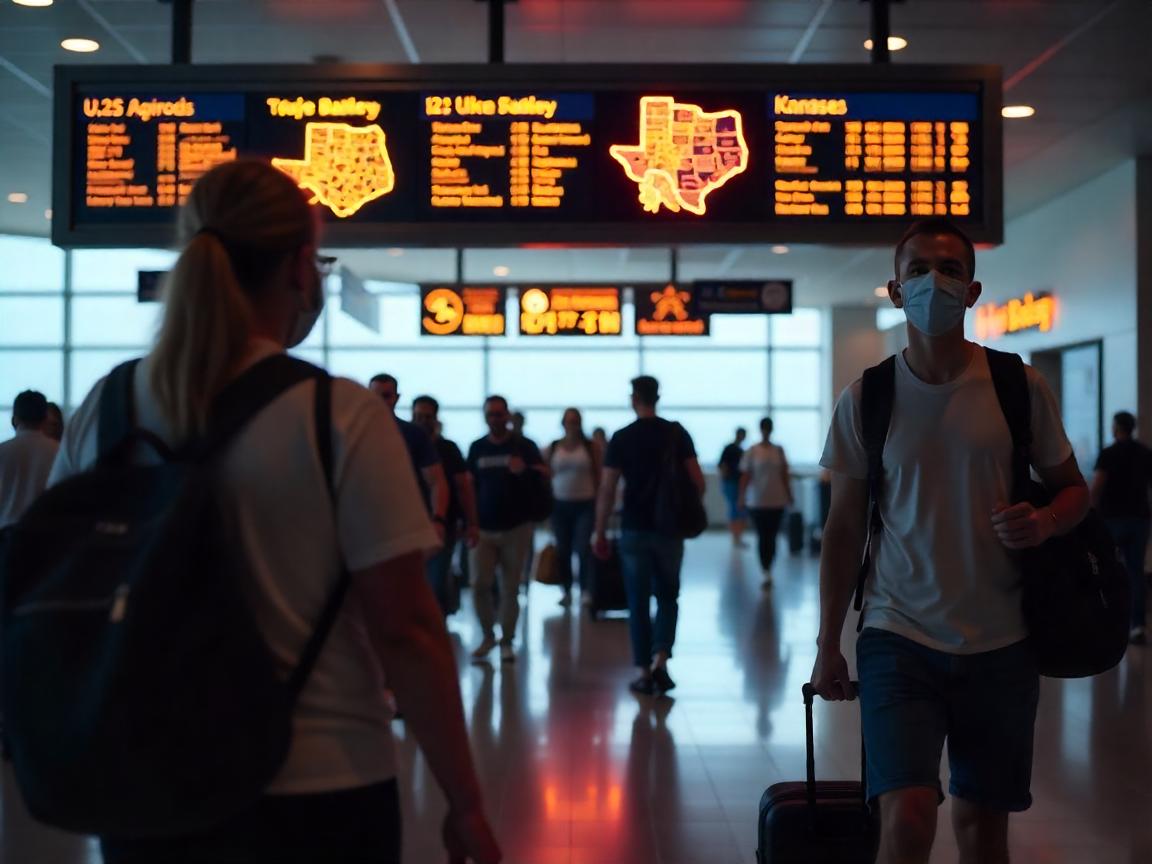US Summer Air Travel Sees Record Surge in 2025

The summer of 2025 is witnessing an unprecedented surge in United States air travel, with the Transportation Security Administration (TSA) reporting record-breaking passenger volumes. This trend signals a period of historic travel activity, marked by six of the year’s top ten busiest days for the agency occurring prior to the Fourth of July holiday. On Sunday, June 22, 2025, TSA screened nearly 3.1 million travelers, setting an all-time agency record for the busiest day in its 24-year history. This surpassed the previous peak of 2.9 million passengers and even exceeded the 3 million screened on June 19. Subsequent record days included June 27 and June 29, further solidifying 2025 as a landmark year for air travel.
Several interconnected factors are fueling this remarkable increase in passenger numbers. A significant driver is the continued recovery of the global travel industry post-pandemic, with many Americans eager to resume pre-pandemic travel routines for vacations, family reunions, and business trips. Economic recovery plays a crucial role, as increased consumer confidence allows more people to afford travel. Airlines are also contributing to the surge by offering attractive flight deals, expanded routes, and increased flight options, making air travel more accessible and affordable. The strategic timing of the Fourth of July holiday, falling on a Friday, has created extended weekends, encouraging more people to travel for longer durations, which aligns with a broader trend of spread-out summer travel.
As the peak Fourth of July holiday period approaches, TSA is making extensive preparations for an estimated 18.5 million travelers expected to pass through security checkpoints between July 1 and July 7. Sunday, July 6, is projected to be the single busiest day of the holiday period, with nearly 2.9 million passengers anticipated. To manage this influx, TSA has implemented a robust strategy, including fully staffed checkpoints with over 10,000 officers deployed nationwide, increased use of technology such as automated passport control kiosks, and biometric screening systems. Travelers are strongly advised to arrive early—at least two hours for domestic flights and three hours for international flights—and to prepare for security screenings by familiarizing themselves with guidelines like the 3-1-1 liquids rule and ensuring electronics are easily accessible. Considering TSA PreCheck can also expedite the process.
While national air travel shows significant growth, regional variations are apparent. In Iowa and the Midwest, a slight decrease in air travel has been noted, which is being offset by an increased reliance on other modes of transportation. For the July 4th holiday weekend, AAA Iowa projects over 72 million people nationwide will travel by vehicle, an increase of nearly two million from last year. Buses, trains, and cruises are also experiencing a resurgence, with a projected nine percent increase compared to last year's holiday travel season. Iowa, in particular, is expected to see a substantial uptick in overall travelers, serving as both a tourist destination and a crucial transit hub for road trippers along major interstates like I-80 and I-35. Road safety remains paramount, with Iowa’s “Move Over” law—requiring drivers to move over or slow down for stopped vehicles with emergency flashers—being emphasized to protect roadside personnel during high-traffic periods.
The current travel boom serves as a significant indicator of the nation’s economic recovery. Travel spending is a substantial contributor to the U.S. economy, boosting various industries including aviation, tourism, hospitality, and retail. The increased demand for flights leads to airlines hiring more staff and airports investing in infrastructure improvements to accommodate higher passenger volumes. Experts anticipate that this sustained air travel growth will continue into the late summer and fall months, with historical data showing a consistent 3-5% year-over-year increase. As 2025 unfolds, the aviation sector is not only bouncing back stronger but is also poised for a future of continued growth and opportunity, signifying a positive economic trajectory for the United States. Travelers are encouraged to plan meticulously, remain patient, and stay informed to ensure a smooth and enjoyable experience during these record-breaking travel periods.
You may also like...
Diddy's Legal Troubles & Racketeering Trial

Music mogul Sean 'Diddy' Combs was acquitted of sex trafficking and racketeering charges but convicted on transportation...
Thomas Partey Faces Rape & Sexual Assault Charges

Former Arsenal midfielder Thomas Partey has been formally charged with multiple counts of rape and sexual assault by UK ...
Nigeria Universities Changes Admission Policies

JAMB has clarified its admission policies, rectifying a student's status, reiterating the necessity of its Central Admis...
Ghana's Economic Reforms & Gold Sector Initiatives

Ghana is undertaking a comprehensive economic overhaul with President John Dramani Mahama's 24-Hour Economy and Accelera...
WAFCON 2024 African Women's Football Tournament

The 2024 Women's Africa Cup of Nations opened with thrilling matches, seeing Nigeria's Super Falcons secure a dominant 3...
Emergence & Dynamics of Nigeria's ADC Coalition

A new opposition coalition, led by the African Democratic Congress (ADC), is emerging to challenge President Bola Ahmed ...
Demise of Olubadan of Ibadanland
Oba Owolabi Olakulehin, the 43rd Olubadan of Ibadanland, has died at 90, concluding a life of distinguished service in t...
Death of Nigerian Goalkeeping Legend Peter Rufai

Nigerian football mourns the death of legendary Super Eagles goalkeeper Peter Rufai, who passed away at 61. Known as 'Do...




